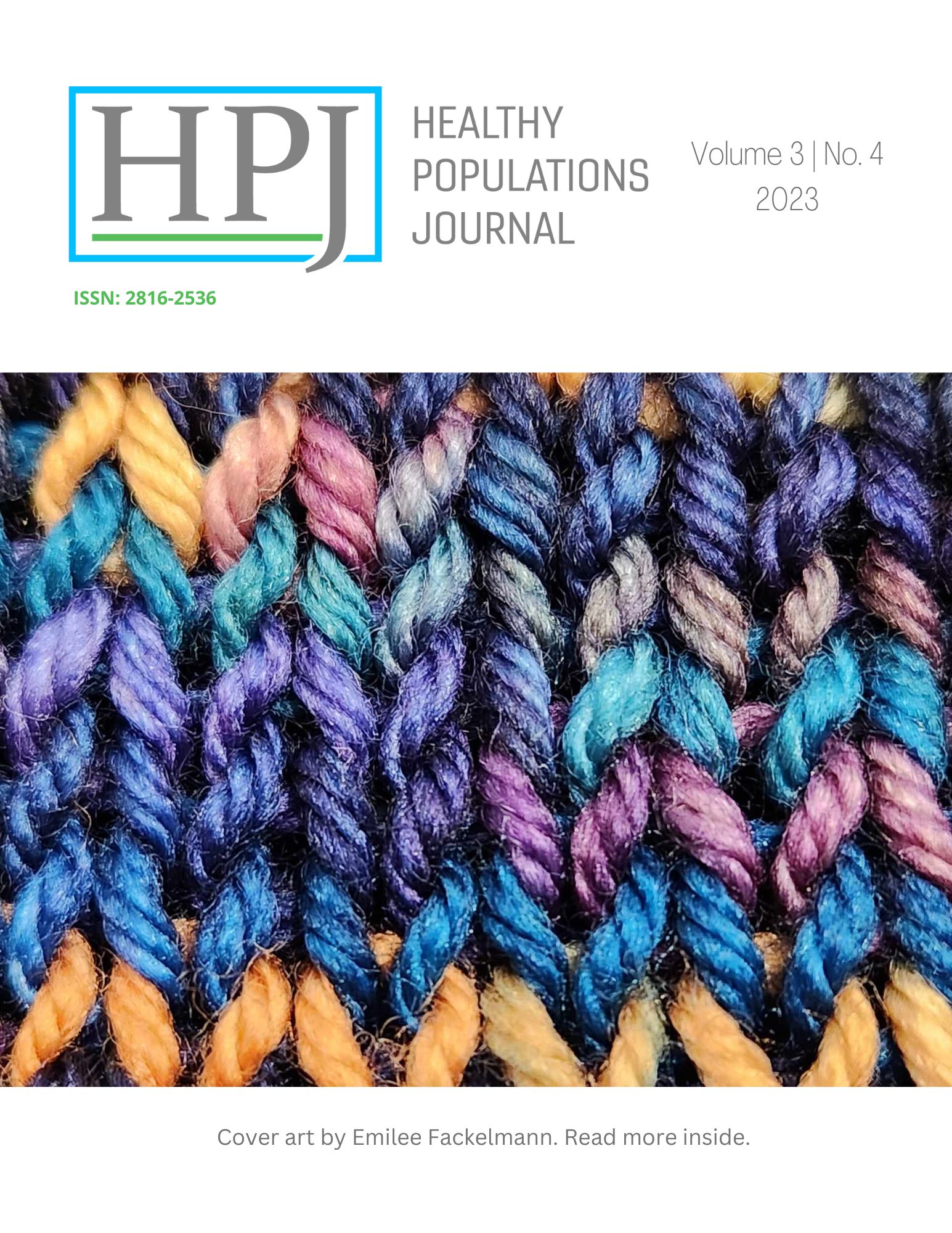Virtually Prioritizing a Community's Needs: What Would Make it Easier for People who are Experiencing Homelessness to Manage Their Diabetes?
DOI:
https://doi.org/10.15273/hpj.v3i4.11597Palabras clave:
Diabetes, Homelessness, Diabetes Stigma, Priority SettingResumen
Introduction: During the pandemic, a group of people with lived experience (co-researchers) was convened for a community-based participatory research (CBPR) project in Calgary, AB that aimed to explore and address barriers to managing diabetes while experiencing homelessness. The group met bi-weekly using a videoconferencing platform on internet-enabled tablets. Objectives: Our aim is to explain the process we undertook to virtually engage in priority setting to identify a research priority for the CBPR project. Methods: Co-researchers participated in 17 focus group discussions about barriers to managing diabetes while experiencing homelessness, following which they were asked to brainstorm responses to the question, “What would make it easier for people who are experiencing homelessness to manage their diabetes?” In subsequent meetings, the responses were grouped to form categories. From those, the group chose the priority using a modified nominal group process, which involved sequentially ranking, then rating the categories. Ranking involved picking 1st, 2nd, 3rd and 4th choices, and rating involved distributing 0 to 10 points amongst the categories. Results: Seven categories were formed: Healthcare; Screening for Diabetes; Housing and Shelter; Access to Medications and Supplies; Healthy Food; Diabetes Awareness; and Diabetes Education. Among these, Diabetes Awareness was given the most votes during the ranking and the most points during the rating exercises. Therefore, this is the topic our research will be focused on. Conclusion: We will conduct research for the purpose of increasing diabetes awareness, among shelter staff specifically, and use forum theatre and a short narrative film to share the findings.
Citas
Hwang, S. W., & Bugeja, A. L. (2000). Barriers to appropriate diabetes management among homeless people in Toronto. Canadian Medical Association Journal, 163(2), 161–165. https://www.cmaj.ca/content/cmaj/163/2/161.full.pdf
Bernstein, R. S., Meurer, L. N., Plumb, E. J., & Jackson, J. L. (2015). Diabetes and hypertension prevalence in homeless adults in the United States: A systematic review and meta-analysis. American journal of public health, 105(2), e46–e60. https://doi.org/10.2105/AJPH.2014.302330
Grewal, E. K., Campbell, R. B., Booth, G. L., McBrien, K. A., Hwang, S. A., O’Campo, P., & Campbell, D. J. T. (2021). Using concept mapping to prioritize barriers to diabetes care and self-management for those who experience homelessness. International Journal for Equity in Health, 20, article 158. https://doi.org/10.1186/s12939-021-01494-3
Descargas
Archivos adicionales
Publicado
Número
Sección
Licencia
Derechos de autor 2023 Saania Tariq, Eshleen Kaur Grewal, Nat B, Roland Booth, Thami Ka-Caleni, Matt Larsen, Justin Lawson, Anna Whaley, Christine A Walsh, David John Thomas Campbell

Esta obra está bajo una licencia internacional Creative Commons Atribución-NoComercial 4.0.
The journal aims to reduce barriers to publishing and sharing research and inequalities to accessing information.This journal provides immediate open access to its content on the principle that making research freely available to the public supports a greater global exchange of knowledge. The open-access nature of the journal means that there will be no charge for authors or readers to use the journal. The journal has a Creative Commons Attribution Non-Commercial (CCBYNC) attribution which allows the author (and others) to share and distribute their full-text article in other public domains, such as Google Scholar or Research Gate.

